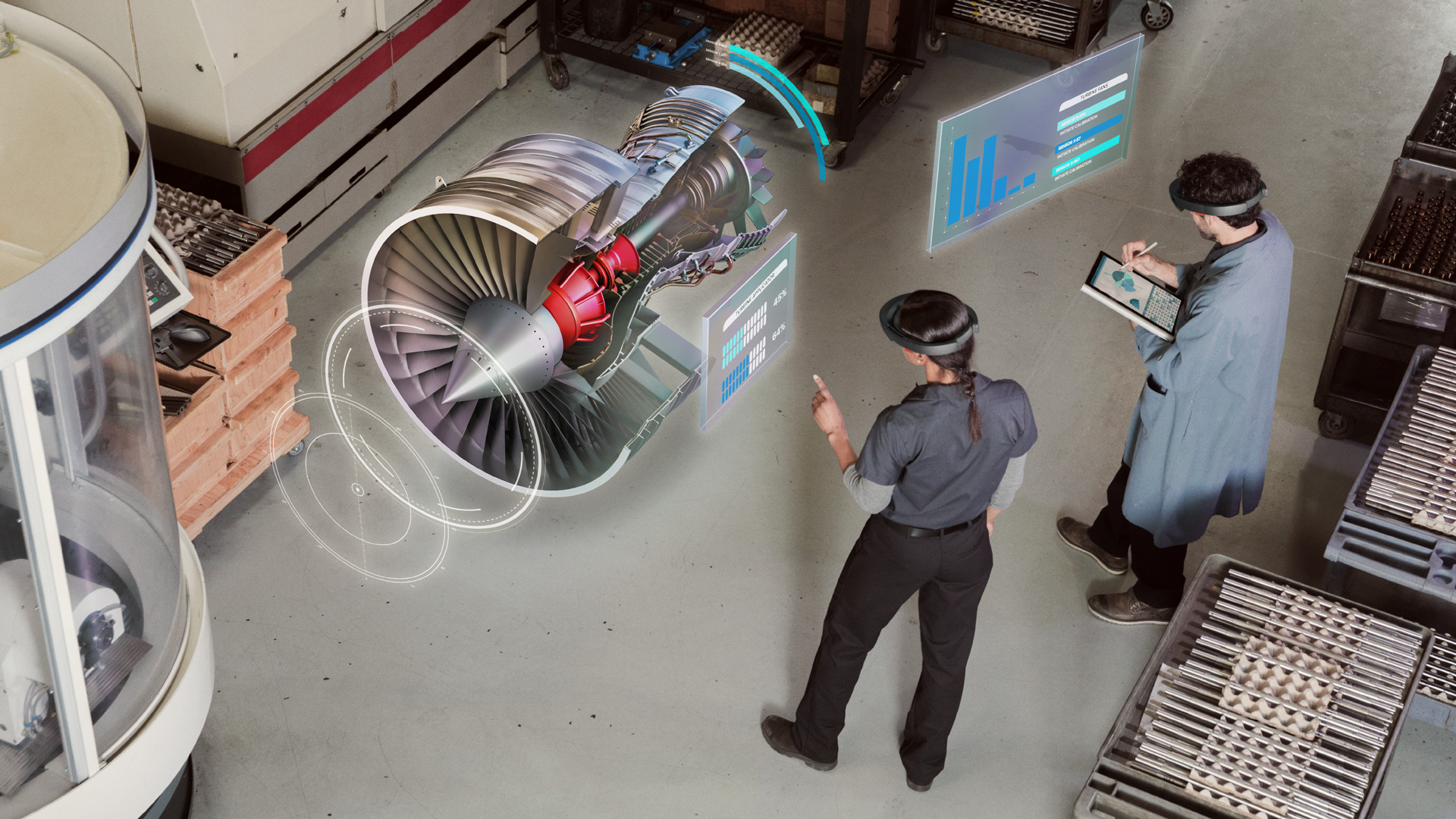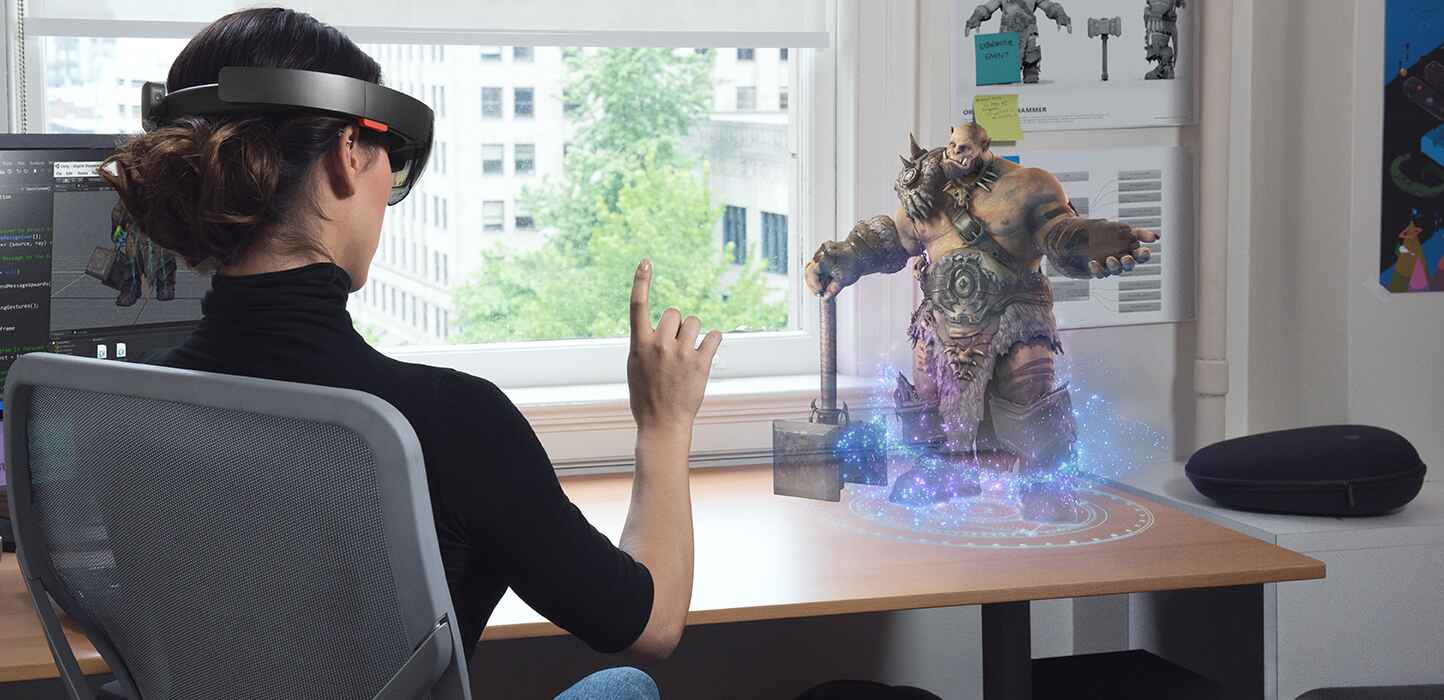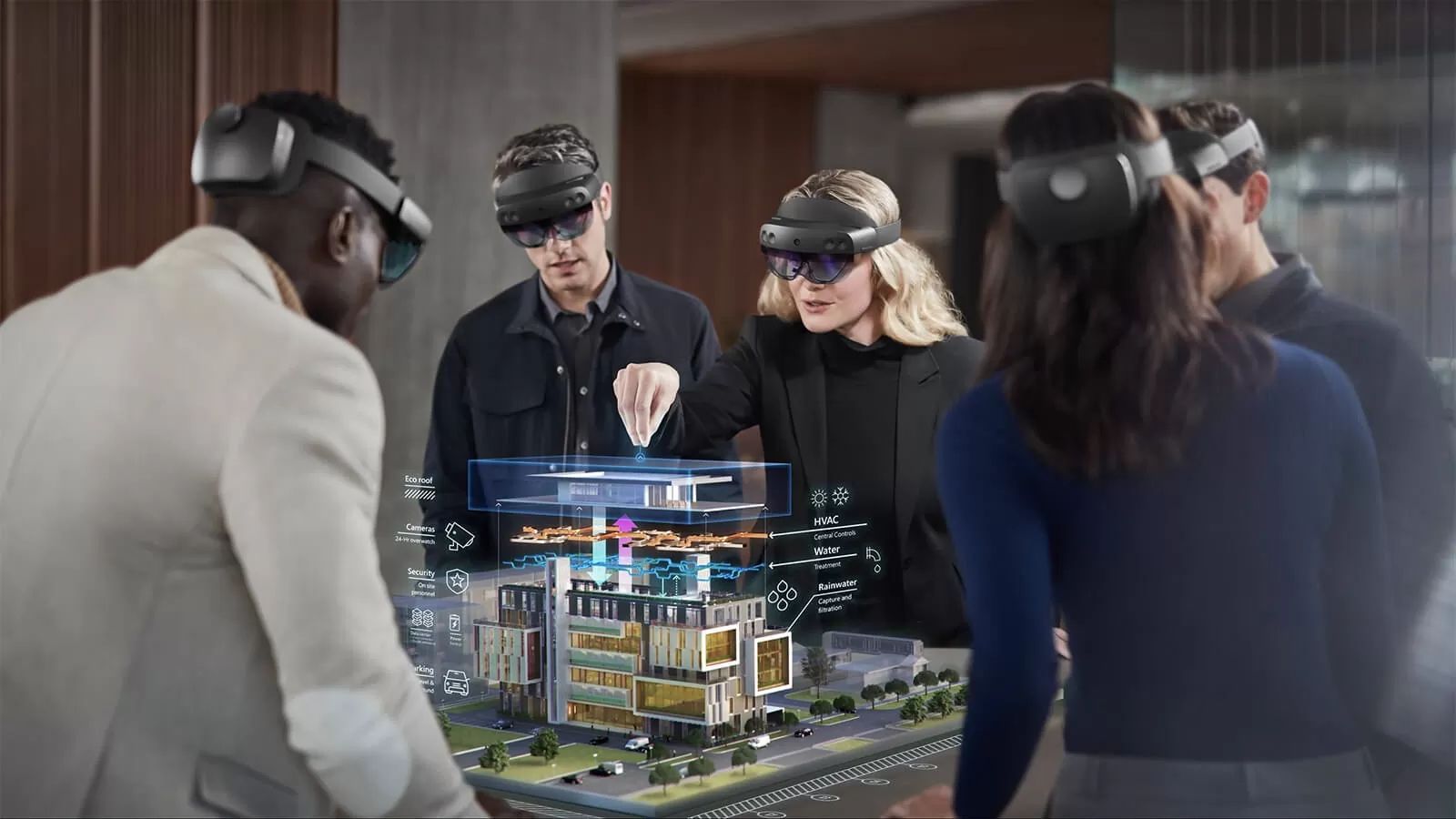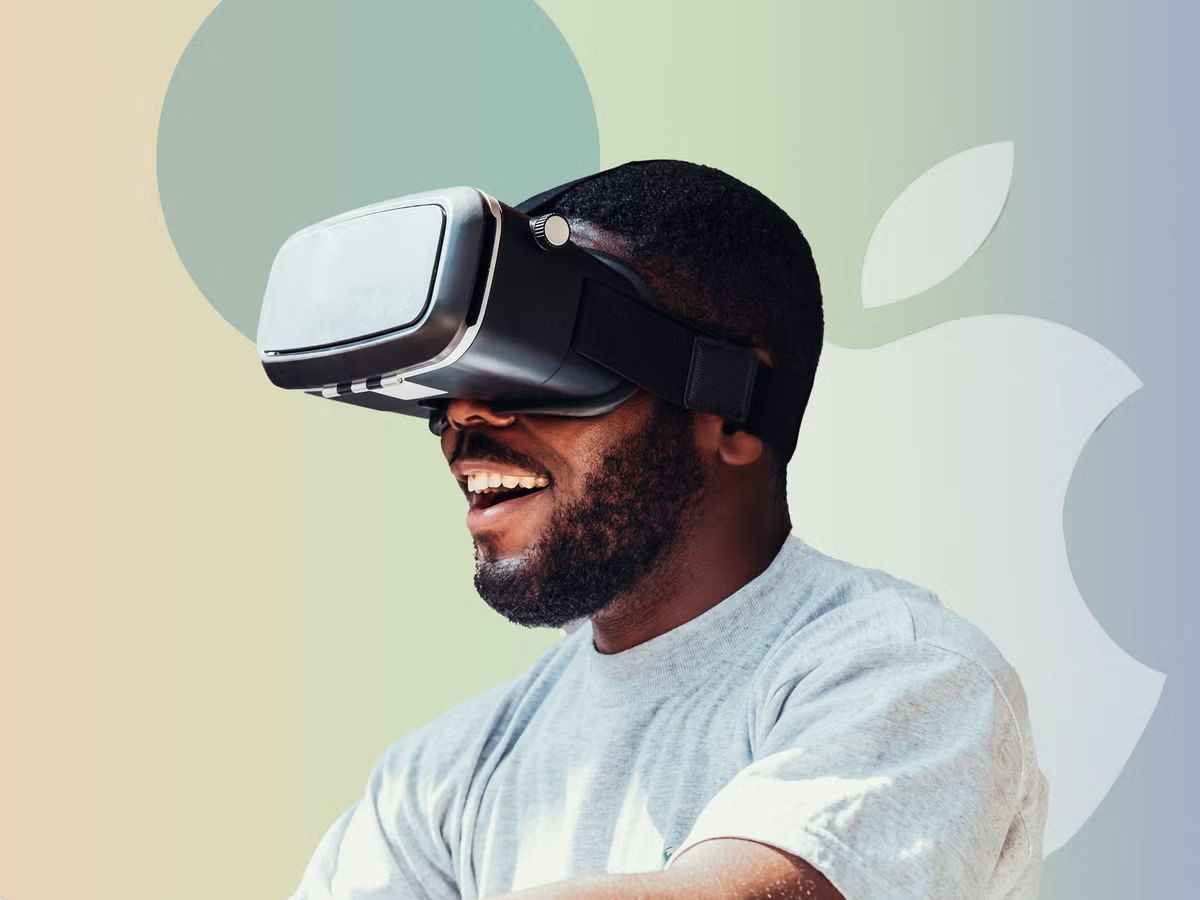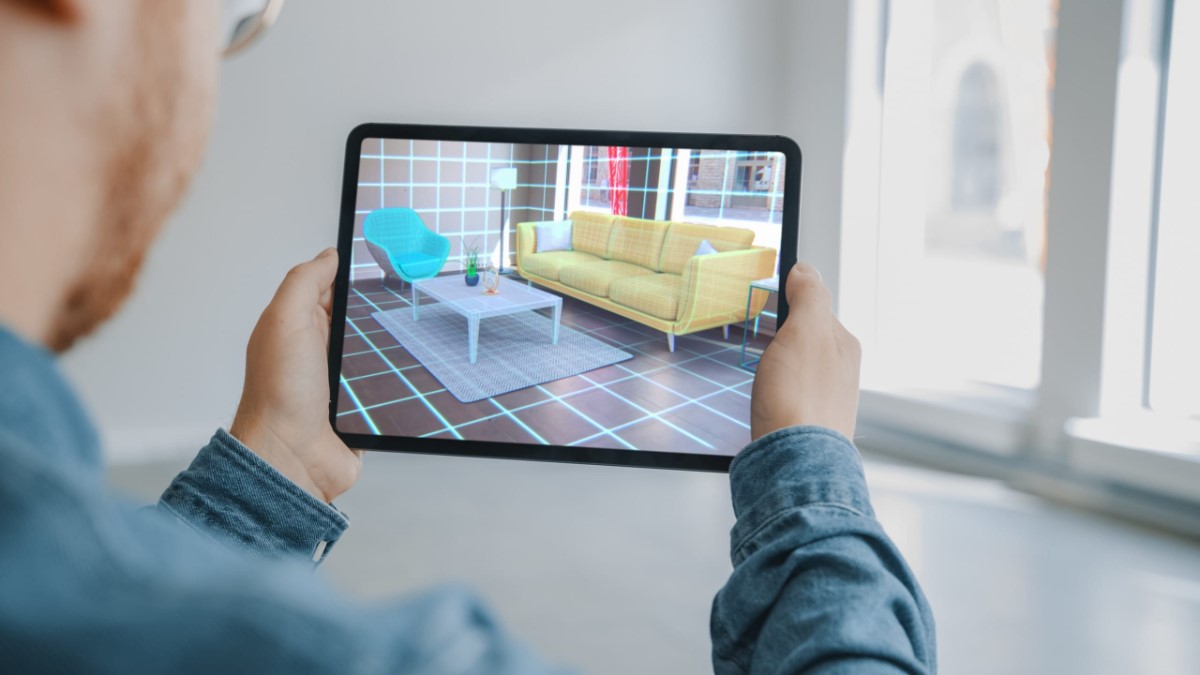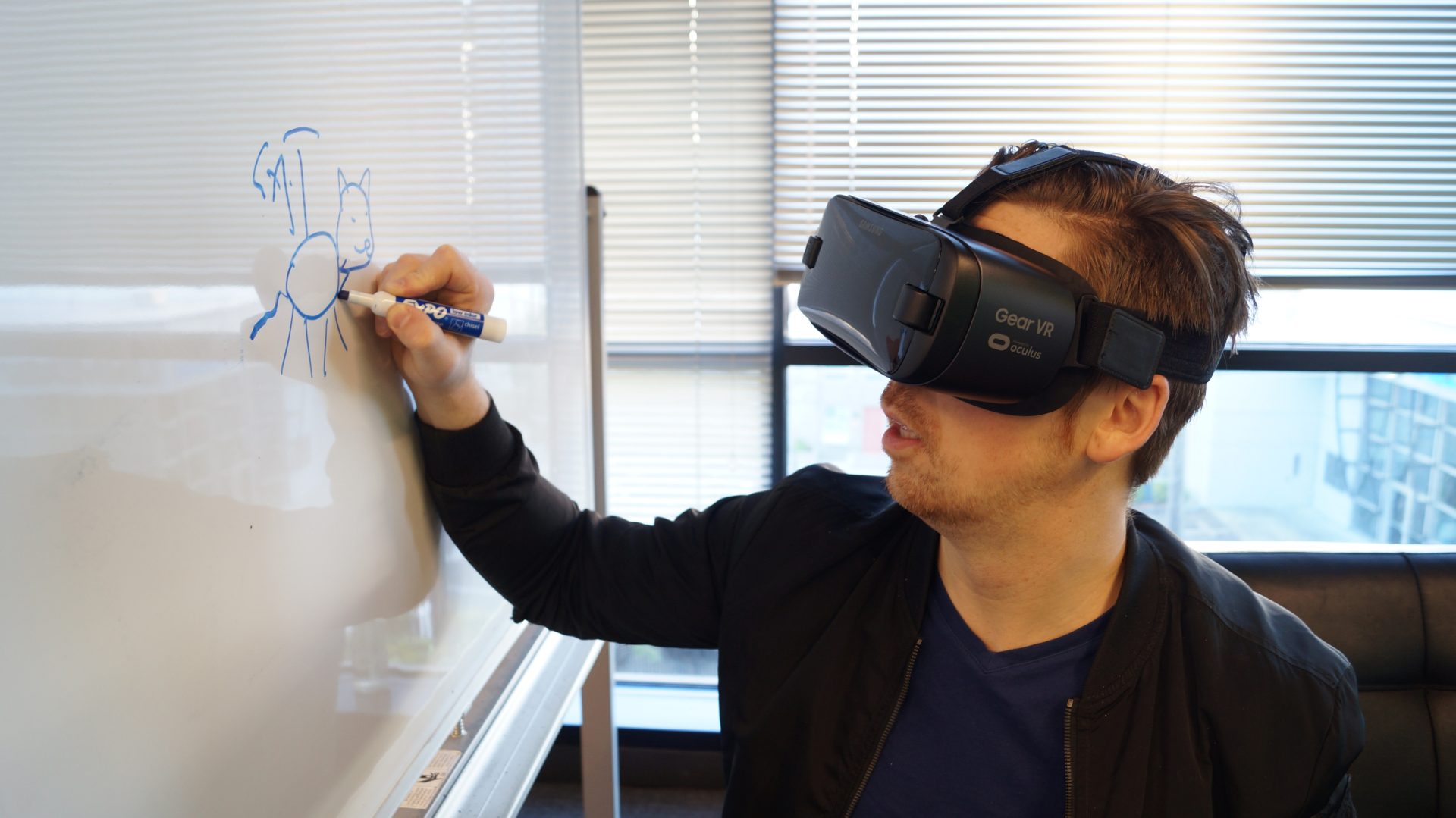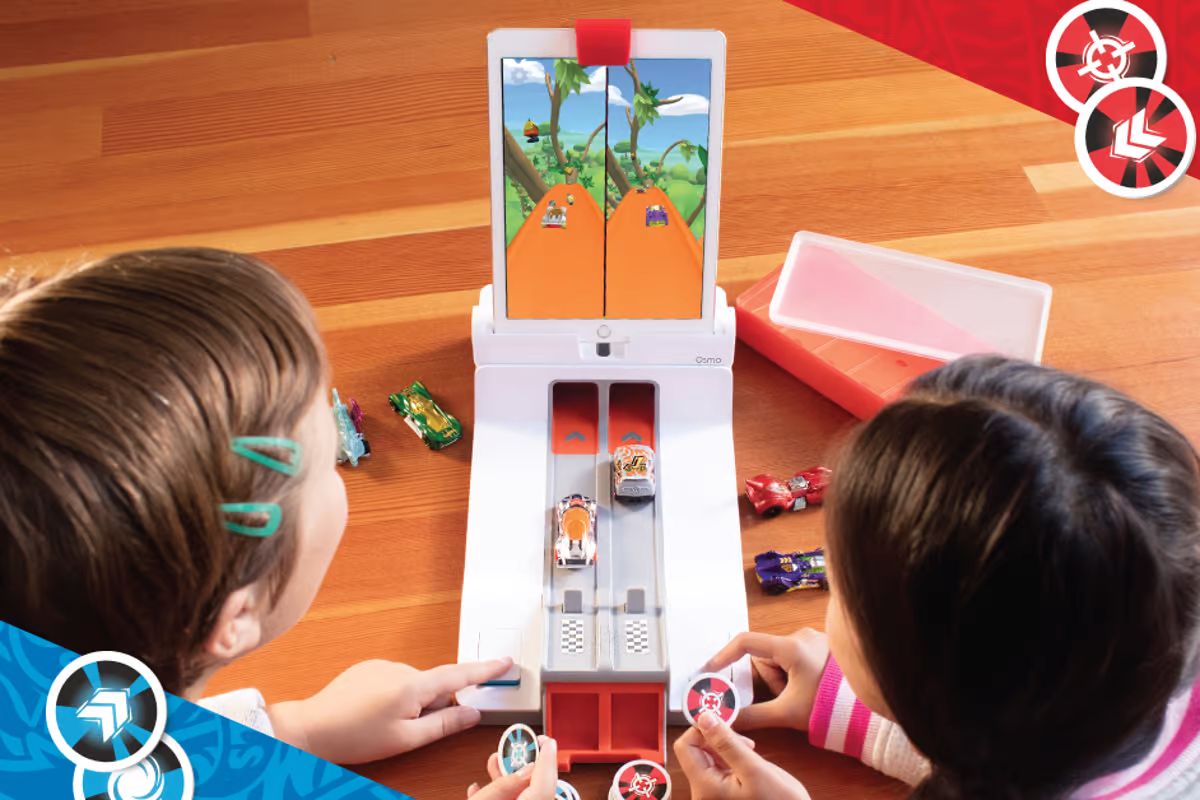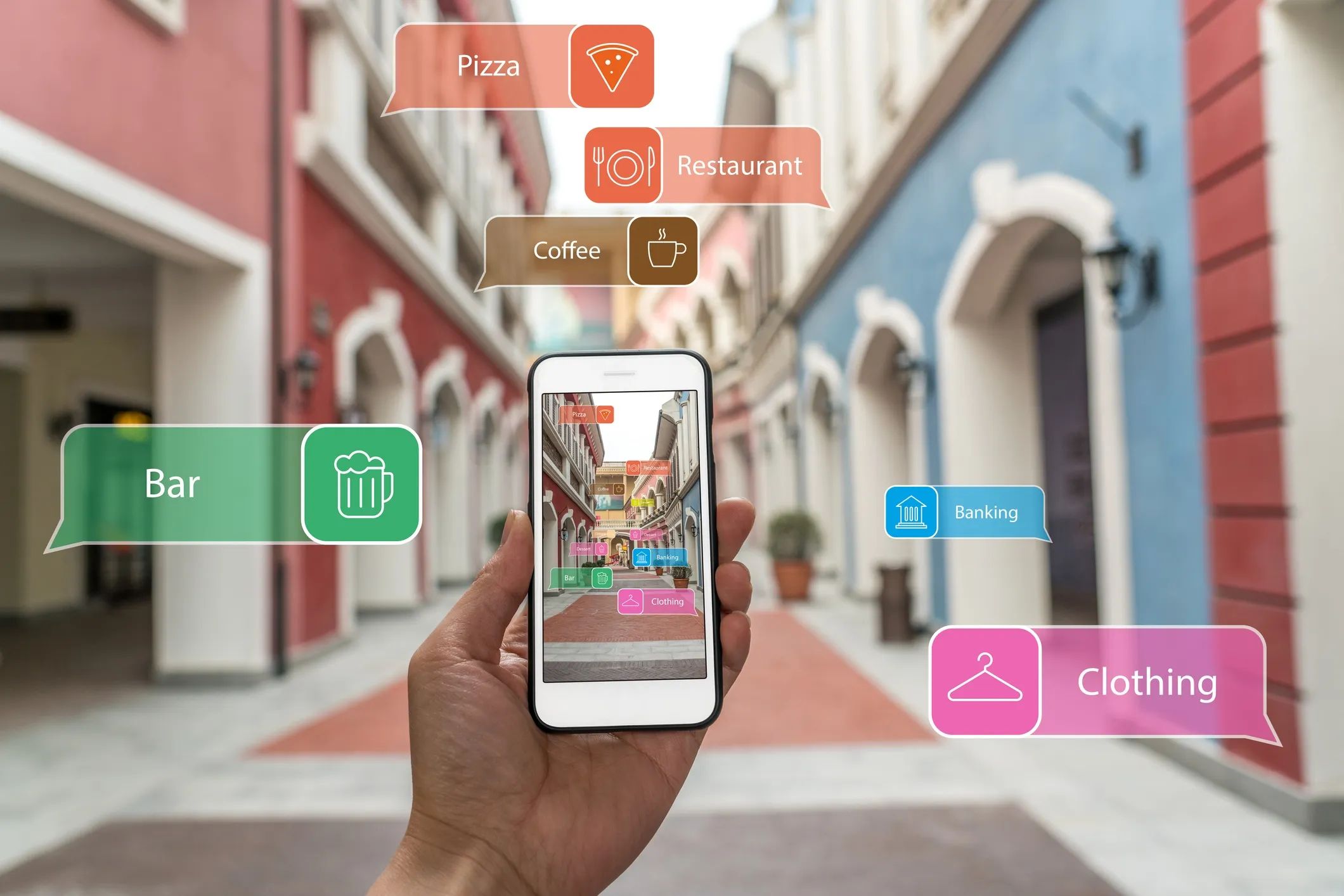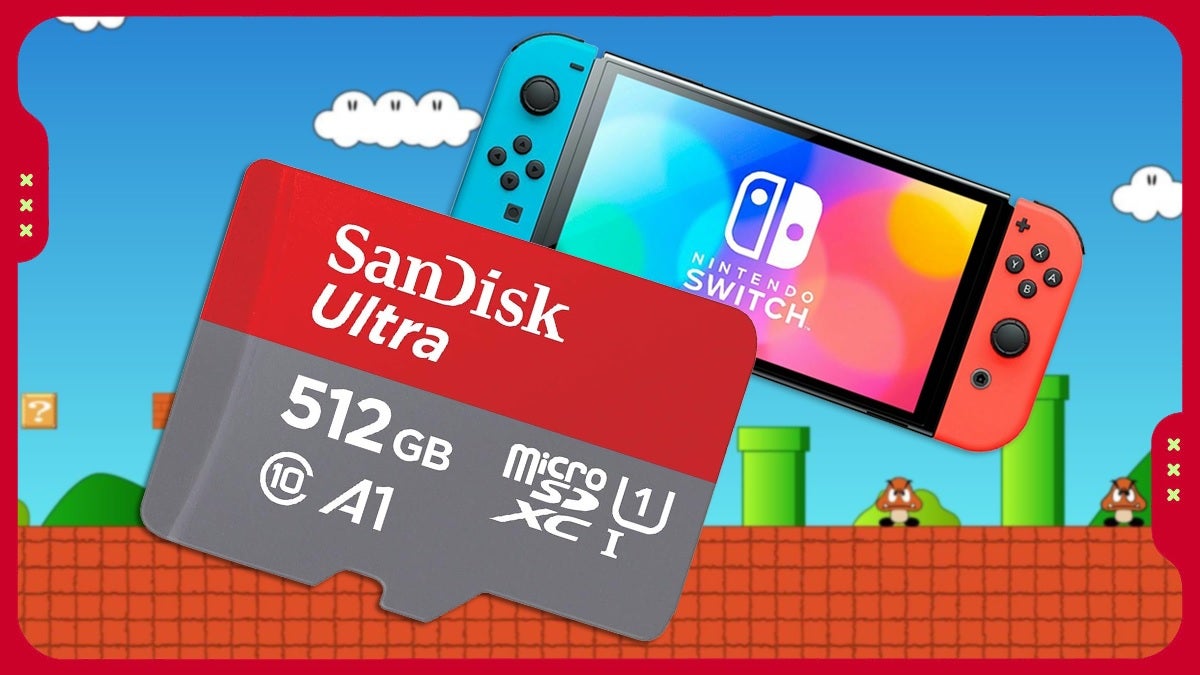Introduction
As technology continues to evolve, new concepts and innovations are constantly reshaping the way we interact with the digital world. Two terms that often come up in discussions about immersive experiences are Mixed Reality (MR) and Augmented Reality (AR). While both offer exciting possibilities, it is important to understand how each of them is distinct and how they relate to one another.
Mixed Reality is an emerging technology that combines virtual and real-world elements, creating an interactive and immersive experience. It blends the digital and physical worlds seamlessly, allowing users to interact with virtual objects in real-time within their physical environment. On the other hand, Augmented Reality overlays digital content onto the real world, enhancing the user’s perception of reality without fully merging the two.
This article will delve into the differences between Mixed Reality and Augmented Reality and explore how Mixed Reality expands on the foundation laid by Augmented Reality. By understanding their distinctions and the evolving capabilities of Mixed Reality, we can gain insight into the future of immersive technologies and the impact they may have on various industries.
Before delving deeper into Mixed Reality, it is crucial to understand Augmented Reality. AR technology enhances the user’s perception of reality by overlaying digital information on top of the real world. Through the use of smartphones, smart glasses, or dedicated AR devices, users can interact with virtual elements while still being aware of their physical surroundings.
Mixed Reality takes the concept of Augmented Reality a step further by seamlessly integrating virtual objects into the user’s real-world environment. It tracks the user’s movements and aligns the digital content with the physical space, allowing for a highly interactive and immersive experience. In Mixed Reality, virtual objects not only appear to coexist with the real world but also interact with it in real-time, providing an unprecedented level of engagement.
Understanding the fundamental differences between Mixed Reality and Augmented Reality is crucial in recognizing the unique capabilities that Mixed Reality brings to the table. Whether it is enhancing gaming experiences, revolutionizing virtual training, or enabling complex design and visualization processes, the expansion of Mixed Reality offers a wide range of applications across various industries.
In the following sections, we will explore how Mixed Reality builds on the foundation of Augmented Reality, the applications that demonstrate its capabilities, and the benefits and challenges associated with this emerging technology.
Definition of Mixed Reality
Mixed Reality (MR) is an advanced form of technology that encompasses elements of both virtual reality and augmented reality. It seamlessly blends the digital and physical worlds together, creating a new environment where virtual objects coexist and interact with the real world.
In Mixed Reality, users wear a head-mounted display (HMD) that overlays computer-generated graphics and objects onto their real-world surroundings. Unlike virtual reality, where users are fully immersed in a virtual environment, Mixed Reality enables users to see and interact with virtual content while still being aware of their physical environment.
One of the defining features of Mixed Reality is the ability to anchor virtual objects in real-world locations. This means that users can place virtual objects on tables, interact with them using their hands, and even move them around as if they were physical objects. This level of interactivity and realism is what sets Mixed Reality apart from other immersive technologies.
The key technology behind Mixed Reality is spatial mapping and tracking. Using cameras and sensors, the MR device scans the user’s environment to create a 3D representation, allowing virtual objects to be placed and interact within the physical space. This precise mapping and tracking enable realistic and seamless integration of virtual content into the real world.
Another important concept in Mixed Reality is the concept of the virtual continuum, which refers to a spectrum of experiences ranging from fully virtual to fully real. In this continuum, Augmented Reality lies on one end, where virtual content overlays the real world, while virtual reality lies on the other end, where users are entirely immersed in a computer-generated environment. Mixed Reality sits in the middle, allowing for a dynamic blend of real and virtual elements.
It is worth noting that Mixed Reality is not limited to visual experiences alone. It can also incorporate other sensory inputs, such as spatial audio or haptic feedback, to further enhance the user’s immersion and interaction with the virtual objects.
Overall, Mixed Reality represents a revolution in human-computer interaction, offering a unique and immersive way to engage with digital content by seamlessly integrating it into the physical world. Its ability to anchor virtual objects and enable users to interact with them in real-time opens up a wide range of possibilities across industries, from gaming and entertainment to education, healthcare, and beyond.
Definition of Augmented Reality
Augmented Reality (AR) is a technology that enhances the user’s perception of reality by overlaying digital information onto the real world. It involves blending virtual elements with the user’s physical environment, effectively augmenting their surroundings with digital content.
In Augmented Reality, users typically view the augmented content through devices such as smartphones, tablets, or specialized AR glasses. These devices utilize cameras, sensors, and GPS technology to understand the user’s location and orientation, allowing them to overlay relevant digital information onto their real-world surroundings.
AR can provide various types of digital overlays, such as text, images, animations, videos, and 3D models. The overlays are anchored to specific objects or locations, and users can interact with them through touch gestures, voice commands, or other input methods.
This technology has found applications in numerous industries, including gaming, education, retail, architecture, and healthcare. For instance, in gaming, AR allows users to bring their favorite characters or game elements into their own physical environment, merging the digital and physical worlds seamlessly.
In education, AR can enhance the learning experience by providing interactive and immersive content. Students can explore historical sites, examine virtual objects in detail, or conduct virtual experiments, all within their real-world classroom or home environment.
AR has also revolutionized the retail industry by enabling virtual try-on experiences. Customers can use AR applications to visualize how clothing items or furniture would look in their own living spaces before making a purchase, eliminating the need for guesswork or returns.
Overall, Augmented Reality extends our perception of reality by adding a layer of digital information to our physical surroundings. It enhances our understanding and interaction with the world, opening up new possibilities for entertainment, education, and practical applications in various industries.
It is important to note that Augmented Reality differs from Mixed Reality in the level of integration between virtual and real content. While AR overlays digital content onto the real world, Mixed Reality goes a step further by seamlessly merging virtual objects with the physical environment and allowing for real-time interaction. The distinction between these two technologies is essential in understanding the capabilities and potential of Mixed Reality.
Comparison of Mixed Reality and Augmented Reality
Mixed Reality (MR) and Augmented Reality (AR) are often mentioned in the same breath due to their similarities in overlaying digital content onto the real world. However, it is important to understand the distinctions between the two technologies. Here, we will compare and contrast Mixed Reality and Augmented Reality to shed light on their respective features and capabilities.
One key difference between Mixed Reality and Augmented Reality lies in the level of integration between virtual and real content. In Augmented Reality, virtual content is superimposed onto the real-world environment. Users can see and interact with virtual elements while still being aware of their physical surroundings. The virtual overlays in AR do not interact with the physical environment in a spatially aware manner.
In contrast, Mixed Reality takes integration to a higher level. It seamlessly merges virtual objects with the physical environment, creating an enhanced and immersive experience. MR devices track and map the user’s environment, allowing virtual content to interact with real-world objects and respond to the user’s movements. This ability to spatially anchor and manipulate virtual objects in the physical space gives Mixed Reality a more dynamic and engaging quality.
Another important distinction is the level of interactivity. While Augmented Reality enables users to interact with virtual elements through touch gestures or voice commands, Mixed Reality takes interaction a step further. Users can not only touch and manipulate virtual objects but also interact with them using natural hand movements and gestures, thanks to advanced tracking technologies in MR devices.
In terms of the user experience, Augmented Reality is often accessible through smartphones, tablets, or specialized AR glasses. These devices provide a window into the augmented world, overlaying digital content onto the user’s view of the real world. Mixed Reality, on the other hand, typically requires a head-mounted display (HMD) that fully immerses the user in both the virtual and real environments. This immersive nature of Mixed Reality allows for a more intense and realistic experience.
Furthermore, the degree of immersion differs between Mixed Reality and Augmented Reality. In Augmented Reality, users are still connected to the physical world, as they can see their real environment alongside virtual overlays. Mixed Reality, however, offers a more immersive experience by fully integrating the virtual and real environments, making it harder to distinguish between the two.
While both Mixed Reality and Augmented Reality have their unique features and use cases, it is clear that Mixed Reality builds upon the foundation laid by Augmented Reality. By seamlessly integrating virtual objects into the physical world and allowing for realistic interaction, Mixed Reality offers a more immersive, engaging, and dynamic experience.
The ongoing advancements in Mixed Reality technology hold immense potential for various industries, including gaming, education, healthcare, design, and more. As the boundaries between the real and virtual worlds continue to blur, we can expect to see further innovative applications and transformative experiences enabled by both Mixed Reality and Augmented Reality.
How Mixed Reality Builds on Augmented Reality
Mixed Reality (MR) is an exciting advancement that builds upon the foundation laid by Augmented Reality (AR). While AR overlays digital content onto the real world, MR takes integration a step further by seamlessly merging virtual objects with the physical environment and enabling real-time interaction. In this section, we will explore how Mixed Reality builds upon Augmented Reality and expands its capabilities.
One of the key ways that Mixed Reality expands on Augmented Reality is through the integration of virtual objects into the real world. In AR, virtual content is superimposed onto the user’s view of the real environment. However, in MR, virtual objects are not just overlaid but precisely aligned and integrated with the physical space. This allows virtual objects to coexist with real-world objects seamlessly, creating a more immersive and interactive experience.
Furthermore, Mixed Reality devices track the user’s movements and map the physical environment in real-time. This spatial mapping and tracking enable virtual objects in MR to interact with real-world objects in a spatially aware manner. Users can manipulate and move virtual objects as if they were physical objects, providing a level of realism and engagement not possible with traditional Augmented Reality.
Mixed Reality also enhances the user interface and input methods by leveraging the advancements in tracking technologies. In AR, interactions with virtual content are typically limited to touch gestures or voice commands. In MR, users can directly manipulate virtual objects using their hands, thanks to precise hand tracking capabilities. This natural interaction approach in MR creates a more intuitive and immersive user experience.
Another aspect where Mixed Reality builds on Augmented Reality is the level of immersion. While AR provides users with an overlay of digital content on the real world, MR fully immerses users in a hybrid environment where the boundaries between the real and virtual worlds are virtually indistinguishable. This heightened level of immersion in MR enhances the sense of presence and allows users to feel more connected to the virtual content and the integrated experience as a whole.
Additionally, Mixed Reality allows for dynamic and real-time interactions between virtual and real objects. In AR, virtual overlays are generally static and do not interact with the physical environment. In MR, virtual objects can respond to changes in the real-world environment or user interactions, creating a more dynamic and engaging experience. This real-time interaction opens up new possibilities for applications such as gaming, training simulations, and design visualization.
By building on the foundation of Augmented Reality, Mixed Reality expands the possibilities and capabilities of immersive technologies. Its ability to seamlessly integrate virtual and real objects, spatially map the environment, enable natural interactions, and provide a heightened sense of immersion opens up exciting opportunities across industries.
From entertainment and gaming to education, healthcare, and engineering, Mixed Reality offers innovative ways to interact with virtual content and revolutionizes how we perceive and engage with the world. As technology continues to advance, we can expect Mixed Reality to continue evolving and pushing the boundaries of what is possible in the realm of immersive experiences.
Example Applications of Mixed Reality
Mixed Reality (MR) has the potential to revolutionize various industries and transform the way we interact with digital content. Its seamless integration of virtual and real-world elements opens up a myriad of possibilities. In this section, we will explore some example applications of Mixed Reality and the impact it can have in different domains.
One notable area where Mixed Reality can make a significant impact is in gaming and entertainment. MR can transport gamers into a whole new level of immersive experiences by merging virtual objects and characters with their real-world surroundings. Players can physically interact with virtual objects, move around the environment, and engage in thrilling gameplay. This level of immersion and interaction has the potential to redefine the gaming industry and create unprecedented gaming experiences.
Another industry that can greatly benefit from Mixed Reality is education. MR can transform traditional learning by bringing subjects to life and enabling students to engage with interactive and immersive content. For example, students studying history can step into virtual historical settings and experience events firsthand. Anatomy students can explore detailed 3D models of the human body and interact with them in a realistic manner, enhancing their understanding of complex concepts.
Design and visualization are other areas where Mixed Reality can have a significant impact. Architects and interior designers can use MR to create virtual models of buildings or spaces, allowing clients to visualize and explore designs as if they were physically present. This technology can help streamline the design process, improve collaboration, and reduce costs by enabling stakeholders to make informed decisions before construction begins.
Mixed Reality also holds great potential in the field of healthcare. Surgeons can utilize MR to overlay medical images and real-time data onto the patient during surgeries, providing precise guidance and enhancing surgical precision. MR can also be used in rehabilitation, providing interactive visualizations and simulations to aid in physical therapy and recovery.
Training and simulations are another area where Mixed Reality can revolutionize traditional approaches. Military personnel can engage in realistic simulations of combat scenarios, allowing for more effective training and preparation. Similarly, MR can be used in aviation and industrial settings to provide hands-on, immersive training experiences that are more engaging and impactful than traditional methods.
Furthermore, Mixed Reality can have a profound impact on the entertainment and tourism industry. Tourists can use MR devices to explore virtual tours of famous landmarks, enhancing their travel experiences and providing immersive cultural encounters. Entertainment venues can incorporate MR technology to create interactive attractions and immersive performances, taking entertainment to a whole new level.
These examples are just the tip of the iceberg when it comes to the potential applications of Mixed Reality. From gaming and education to design, healthcare, and beyond, the possibilities are vast. As technology continues to advance, we can expect even more innovative and transformative use cases to emerge, further revolutionizing industries and enhancing our daily lives.
Benefits and Challenges of Mixed Reality
Mixed Reality (MR) offers numerous benefits and exciting possibilities, but like any emerging technology, it also comes with its own set of challenges. In this section, we will explore the benefits and challenges of Mixed Reality, shedding light on its potential advantages and the obstacles that need to be overcome.
One of the key benefits of Mixed Reality is its ability to create highly immersive and interactive experiences. By seamlessly merging virtual and real-world elements, MR allows users to engage with digital content in a way that feels natural and realistic. This level of immersion enhances learning, training simulations, and entertainment experiences, leading to increased engagement and improved outcomes.
Another advantage of Mixed Reality is its potential to revolutionize various industries. From entertainment and gaming to education, healthcare, and design, MR opens up new possibilities for innovation and improvement. It can streamline workflows, enhance the visualization and understanding of complex concepts, and provide hands-on training experiences that are more effective and engaging.
Furthermore, Mixed Reality has the potential to enhance collaboration and communication. With MR, users can share a common virtual space and interact with each other, even if they are physically far apart. This can facilitate remote collaboration, enable virtual meetings, and improve teamwork in areas such as design, engineering, and architecture.
However, along with the benefits, there are several challenges that need to be addressed for wider adoption and acceptance of Mixed Reality. One of the primary challenges is the cost and accessibility of MR devices. Currently, MR devices such as head-mounted displays (HMDs) can be expensive, limiting their accessibility to certain industries and individuals. As technology progresses and becomes more affordable, the barrier to entry is expected to decrease.
Another challenge is the issue of comfort and ergonomics. MR devices, especially HMDs, often need to be worn for extended periods. The weight, heat, and discomfort associated with wearing these devices can pose challenges to the user experience. Continued advancements in design and ergonomics will be essential to ensure long-term comfort and acceptance of Mixed Reality devices.
Data privacy and security are also concerns associated with Mixed Reality. As MR involves capturing and processing real-world imagery and spatial mapping, there is a need to protect users’ personal information and maintain the privacy and security of their data. Addressing these concerns through robust privacy measures and data protection protocols is crucial for the widespread adoption of Mixed Reality.
Furthermore, content creation for MR poses its own challenges. Developing high-quality and engaging MR content requires specialized skills and tools. The availability of a wide range of diverse and compelling MR experiences is crucial for driving user adoption and acceptance of the technology. Continued efforts in content creation and development tools will be necessary to expand the MR ecosystem.
Lastly, there is a challenge of user acceptance and acclimation to Mixed Reality experiences. As MR blurs the line between the real and virtual worlds, some users may experience discomfort or disorientation initially. Providing clear instructions, intuitive interfaces, and effective guidance can help users overcome this challenge and fully embrace the benefits of Mixed Reality.
While there are challenges to overcome, the numerous benefits offered by Mixed Reality make it an exciting and promising technology. As we address the challenges related to cost, comfort, privacy, content creation, and user acceptance, we can unlock the full potential of Mixed Reality, revolutionizing industries and enhancing our daily lives.
Conclusion
Mixed Reality (MR) is a transformative technology that builds on the foundation of Augmented Reality (AR) to create immersive and interactive experiences. By seamlessly blending the virtual and real worlds, MR opens up a world of possibilities across various industries.
Through the integration of virtual objects into the physical environment and the ability to interact with them in real-time, MR pushes the boundaries of what is possible in terms of user engagement and immersion. It enhances learning, training, design, and entertainment experiences, offering a dynamic and intuitive way to interact with digital content.
The possibilities of MR are vast. In education, MR can revolutionize the way we learn by providing interactive and immersive experiences that enhance understanding and engagement. In design and architecture, MR enables visualization and collaboration that was previously unimaginable. In healthcare, MR can revolutionize surgical procedures, rehabilitation, and medical training.
However, MR also comes with challenges. The cost, accessibility, and comfort of MR devices need to be addressed to ensure widespread adoption. Additionally, the privacy and security of user data, content creation, and user acceptance require continuous attention and improvement.
Despite these challenges, the benefits of MR are too significant to ignore. Its ability to create realistic and interactive experiences, enhance collaboration, and revolutionize industries holds immense potential. As technology advances and the ecosystem matures, we can expect significant developments in MR and its applications.
Mixed Reality represents a new era of human-computer interaction, where the boundaries between the physical and virtual worlds blur. By leveraging the strengths of Augmented Reality and pushing those boundaries further, MR is reshaping the way we perceive and engage with digital content.
It is an exciting time for the world of technology and innovation. As we continue to explore the possibilities and overcome the challenges, Mixed Reality has the potential to create remarkable experiences and transform the way we live, learn, work, and play.







